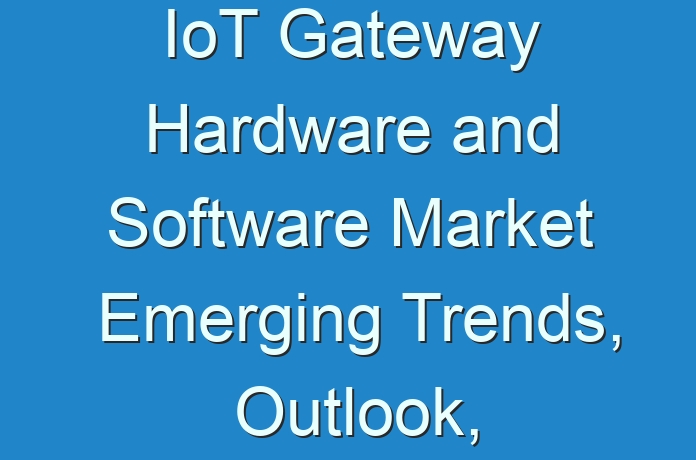
The Internet of Things (IOT) interconnects devices, objects, and systems in a simple and transparent way in order to share information and coordinate operations between the disparate systems and devices. Sensors collect various types of data such as temperature, humidity, ambient light, and inventory levels and share it with the cloud using wireless or wired communication protocols. An IoT gateway acts as a communication bridge between the IoT sensors and devices and a backend cloud server. An IoT gateway device performs critical tasks such as to facilitate inter-compatibility across the IoT network. The IoT gateway also performs several operational tasks such as to manage device configuration, perform device authentication for secure network access and support edge-analytics. IoT gateways help bridge the gap between operations and IT infrastructure within a business. They do this by optimizing system performance through the operational data they gather and process in real-time in the field or at the network edge.
Get Sample Copy:
https://www.transparencymarketresearch.com/sample/sample.php?flag=S&rep_id=55356
IoT gateways provide several benefits to an IoT network such as high scalability, low hardware costs, fast production with a less time-to-market, reduces telecommunications cost, mitigate risks, and increases security. Gateways reduce burden on individual sensors by handling complex processing and memory and storage requirement. It can reduce machine-to-machine (M2M) traffic, isolate malfunctioning devices, and provide encryption to the communications between the sensors and the cloud through public key infrastructure (PKI).
Challenge affecting IoT gateway hardware and software market growth is in enabling interoperability of end nodes while supporting multiple connectivity sensor protocols such as Z-Wave, ZigBee, BLE, and Wi-Fi. Other constraints include maintaining backend connectivity, performing caching and queuing of data, power overloads or power outages, and adequate serviceability options. A gateway needs to consider the criticality of the application, mitigate the effects of a loss of connectivity to the backend, and provide minimum functionality within the IoT sensor network in case of power outages.
Request For PreBook Report@:
https://www.transparencymarketresearch.com/checkout.php?rep_id=55356<ype=S
The global IoT gateway hardware and software market can be segmented based on enterprise size, component, deployment, application, and region. In terms of enterprise size, the IoT gateway hardware and software market can be bifurcated into small and medium enterprises (SMEs) and large businesses. Based on component, the IoT gateway hardware and software market can be classified into hardware, software, and services. The hardware segment can be sub-segmented into processors/microcontrollers, IoT sensors, protection circuitry, and connectivity modules (such as Zigbee, Bluetooth, and WiFi). In terms of deployment, the IoT gateway hardware and software market can be categorized into on-premise, cloud, and hybrid deployments. The services segment can be further categorized into managed and professional. Professional services can be segregated into prevention, maintenance, and production optimization. In terms of application, the IoT gateway hardware and software market can be classified into smart home automation, smart factory automation, vehicle automation, remote monitoring, and fleet management.
North America is expected to dominate the IoT gateway hardware and software market due to the increase in R&D activities in the field of IoT. Research is being conducted to increase IoT applications in industries such as consumer products, energy & power, manufacturing, automotive & transportation, and health care, especially in the US. Rise in investment in IoT by companies in Asia Pacific is expected to drive the market in the region. Increase in integration of IoT technology in the health care industry is expected to create opportunities for the market in Asia Pacific.
Leading vendors in the global the IoT gateway hardware and software market include AAEON Technology Inc., ADLINK Technology Inc., Advantech Co., Ltd, Dell Inc., Hewlett Packard Enterprise. Other prominent vendors in the market include Cisco Systems, Inc., Huawei Technologies Co., Ltd., Siemens Ltd., Eurotech Spa, and Lantronix Inc.
About Us
Transparency Market Research is a next-generation market intelligence provider, offering fact-based solutions to business leaders, consultants, and strategy professionals.
Our reports are single-point solutions for businesses to grow, evolve, and mature. Our real-time data collection methods along with ability to track more than one million high growth niche products are aligned with your aims. The detailed and proprietary statistical models used by our analysts offer insights for making right decision in the shortest span of time. For organizations that require specific but comprehensive information we offer customized solutions through adhoc reports. These requests are delivered with the perfect combination of right sense of fact-oriented problem solving methodologies and leveraging existing data repositories.
TMR believes that unison of solutions for clients-specific problems with right methodology of research is the key to help enterprises reach right decision.
Contact Us
Transparency Market Research
State Tower,
90 State Street,
Suite 700,
Albany NY – 12207
United States
USA – Canada Toll Free: 866-552-3453
Email: sales@transparencymarketresearch.com
Website: https://www.transparencymarketresearch.com





